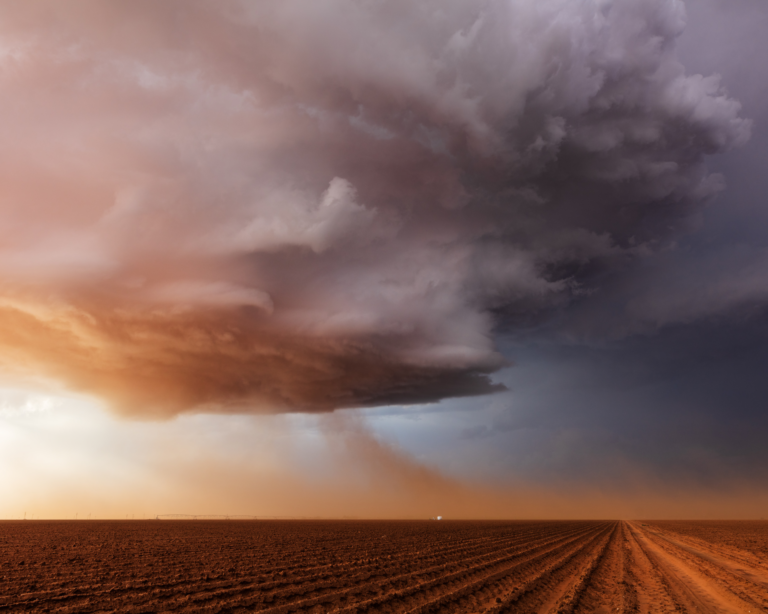When The Dust Settles: Health Costs of Dust Storms
Emergency department visits increased 6% the week following a dust storm, highlighting the need for improved environmental hazard planning.

Read Time: 2 minutes
Published:
In the 1930s, relentless dust storms ravaged the American West in a period known, infamously, as the Dust Bowl. Homes were buried and crops destroyed. Cattle suffocated on dirt as the skies turned black and 2.5 million homeless and hungry people fled.
While the U.S. hasn’t experienced anything like the Dust Bowl since, dust storms still occur regularly in arid regions, including the Southwest and Great Plains. And like most meteorological phenomena, dust storms are exacerbated by climate change. These storms have increased and intensified in recent decades, a pattern that climate models link to worsening drought and soil erosion.
Dust storms form during prolonged dry spells. Strong winds whip up loose soil from the parched land, creating a cloud of particles that enter the lungs and bloodstream, triggering asthma attacks, pneumonia, and heart problems—and straining health systems.
In a new study, Xiaping Zheng and colleagues analyzed the association between emergency department visits and dust storms in Arizona, California, and Utah, using hospital records and National Weather Service reports from 2005-2018.
Emergency department visits rose 6% the week after a storm. Asthma-related visits increased by 6% in the two days following a storm, and similar spikes were seen for pneumonia and congestive heart failure. But the most immediate impact was on the roads. Motor vehicle accidents increased 13% on storm days, likely due to reduced visibility. These increases highlight how extreme weather strains local health systems.

Given the public health implications of dust storms, the researchers recommend integrating environmental hazard planning into health systems so that hospitals can anticipate and plan for spikes in emergency visits. They also call for expanding early warning systems.
The National Weather Service currently issues dust storm warnings when visibility drops dangerously low, and some states have transportation systems that automatically adjust speed limits when they detect dust. However, these warnings typically focus only on road hazards, rather than broader health risks. Specific messaging about the risks of dust exposure, especially for vulnerable groups including older adults and people with chronic conditions, will likely reduce preventable hospitalizations.
As climate change accelerates, health systems must be prepared for the storms and the challenges that remain after the skies clear.



